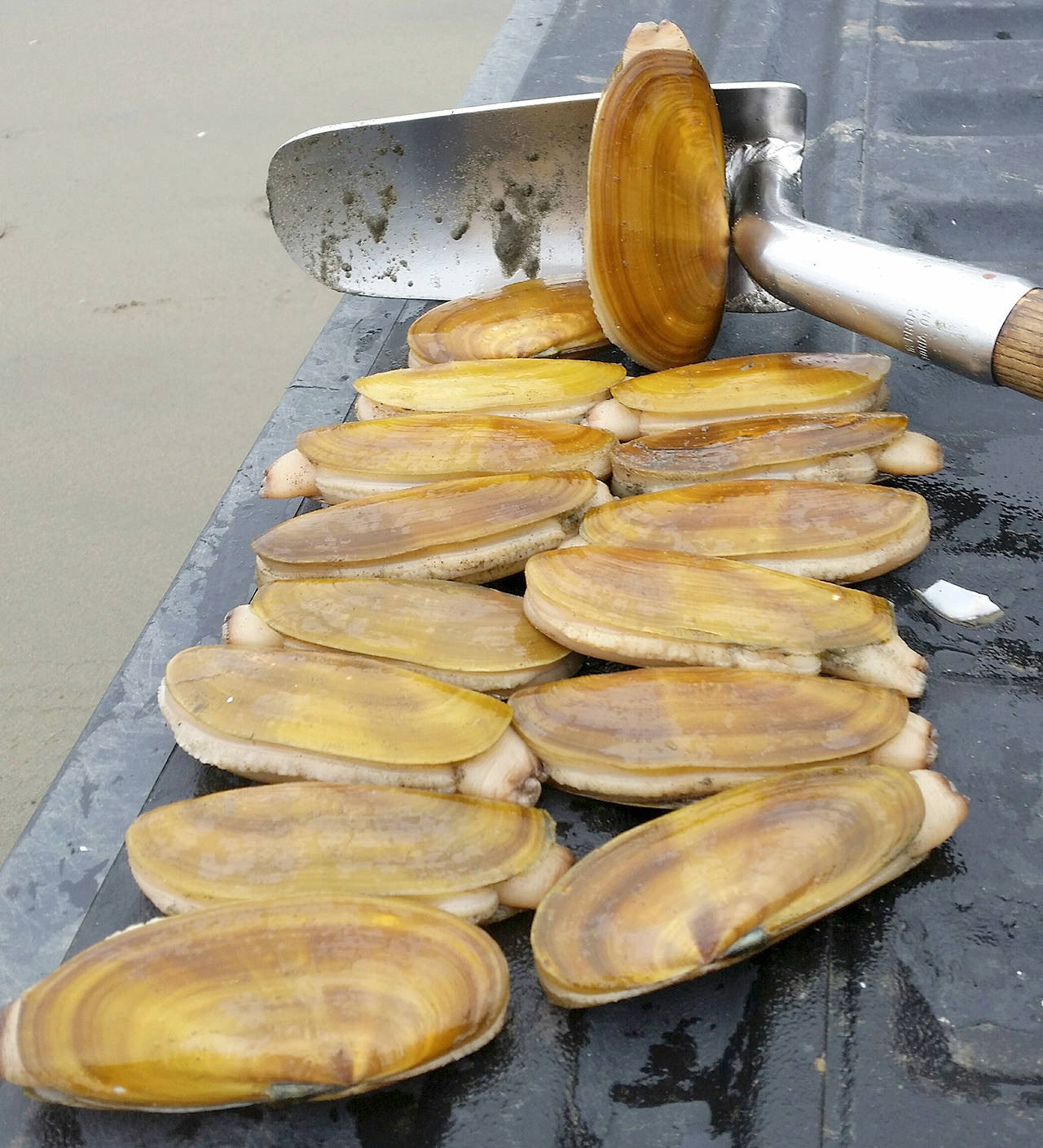A banner razor clam season at most area beaches — Twin Harbors, Long Beach, Copalis and Mocrocks — is predicted by state coastal shellfish biologists.
One exception is Kalaloch Beach. It’s not included in the rosy predictions.
“It’s going to be a fantastic razor clam season that is going to kill my crew,” joked Dan Ayres, coastal shellfish manager for the state Department of Fish and Wildlife.
“We are going to have more digging at Copalis and Mocrocks than we have had in a long time. The population of clams at Long Beach returns strongly after a real rough patch. There were 56 days of digging last season at Twin Harbors, south of Grays Harbor, and the clam population grew, so that’s an encouraging sign.”
Kalaloch ‘a big puzzle’
Similar encouraging signs — and razor clams — were hard to find at Kalaloch during digs there in February and March. A planned dig last January was curtailed by the federal government shutdown (Kalaloch is part of Olympic National Park), otherwise it likely would have been triple disappointment.
February’s dig produced a measly average of 1.8 small razor clams per digger. “And March wasn’t any better,” Ayres said.
“Kalaloch is such a big puzzle for us.”
In clam surveys conducted this summer, crews found a big increase in pre-recruits, the small clams classified as under 3 inches in length.
It was a fairly abundant increase — not like the explosion of razor clam pre-recruits that showed up in summer 2015 — but definitely a rise from last summer.
“Last year, we estimated 1.8 million pre-recruits and 6.1 million recruits, so the population looked pretty healthy,” Ayres said. “When we got out to harvest in February and March there were hardly any clams remaining.”
Population surveys conducted this summer at Kalaloch showed a rise to almost 11 million pre-recruits. But the number of recruit-size clams (larger than 3 inches) declined significantly.
“When we went back this summer there weren’t a lot of recruit-sized clams, just 1.7 million,” Ayres said. “And these are still on the small side, less than 3.5 inches. And clams that are 3.5-inches-or-less is not something people are going to be too thrilled to drive too far for.”
Even if there were abundant recruit-size clams available for harvest, the state Department of Health is not likely to have approved any proposed Kalaloch digs any time soon.
“Kalaloch has had high levels of paralytic shellfish poisoning show up recently, which is fairly unusual,” Ayres said.
“PSP outbreaks are a real common event in Puget Sound in the summer months and typically shut down commercial oyster harvest and recreational diggings. PSP was found in mussels from Second Beach up at La Push, Ruby Beach to the south and even to the north on the Makah reservation.”
Ayres remains semioptimistic for Kalaloch’s future.
“I don’t think it’s hopeless, yet,” Ayres said.
“It’s been a systemic problem for a long time at Kalaloch. From an oceanographic standpoint, it is so different from the razor-clam beaches to the south.”
Ayres said it’s not uncommon to drive past those beaches in the summer time and see brown-colored surf. Sometimes that draws reports of oil spills, but Ayres said it is a sign of a healthy habitat.
“That brown-colored surf is a bloom of healthy diatoms, the unicellular organism that razor clams eat. You don’t see brown surf at Kalaloch, unless it’s after a winter storm.
“I just think it’s not an ideal environment for razor clams. It’s never been a place that has been a hot spot. If there’s an opportunity for some stability, yeah, let’s go dig.”
Otters, whales and pathogens
Kalaloch also has dealt with intranuclear pathogen (nuclear inclusion X), an organism that preys on razor clam populations.
A far larger organism, sea otters, also might play a role in the mystery that is Kalaloch.
“There is a substantial population of sea otters off Destruction Island and sea otters have been seen in the surf at Kalaloch. They are shellfish eaters and have been documented to eat a lot of clams. There’s also a weird thing where the gray whales moved in, right in the surf zone at high tide, and were believed to be feeding on something, possibly clams.”
Fish and Wildlife are planning to do something a little different at Kalaloch going forward.
“The next tide series, we will be running regular samples through a condition index,” Ayres said. “This is something we do on other beaches but has never been done at Kalaloch.”
Ayres said the condition index provides a glimpse of the overall health status of the population.
“We have a crew dig 30 clams and weigh them in their wet state,” Ayres said. “Then they remove the clam’s meat carefully, dry it until it is dust and that takes a couple of days and what you have is a wet weight versus a dry weight. Not much is left, they are mostly made up of water. It provides a way to track spawning.”


